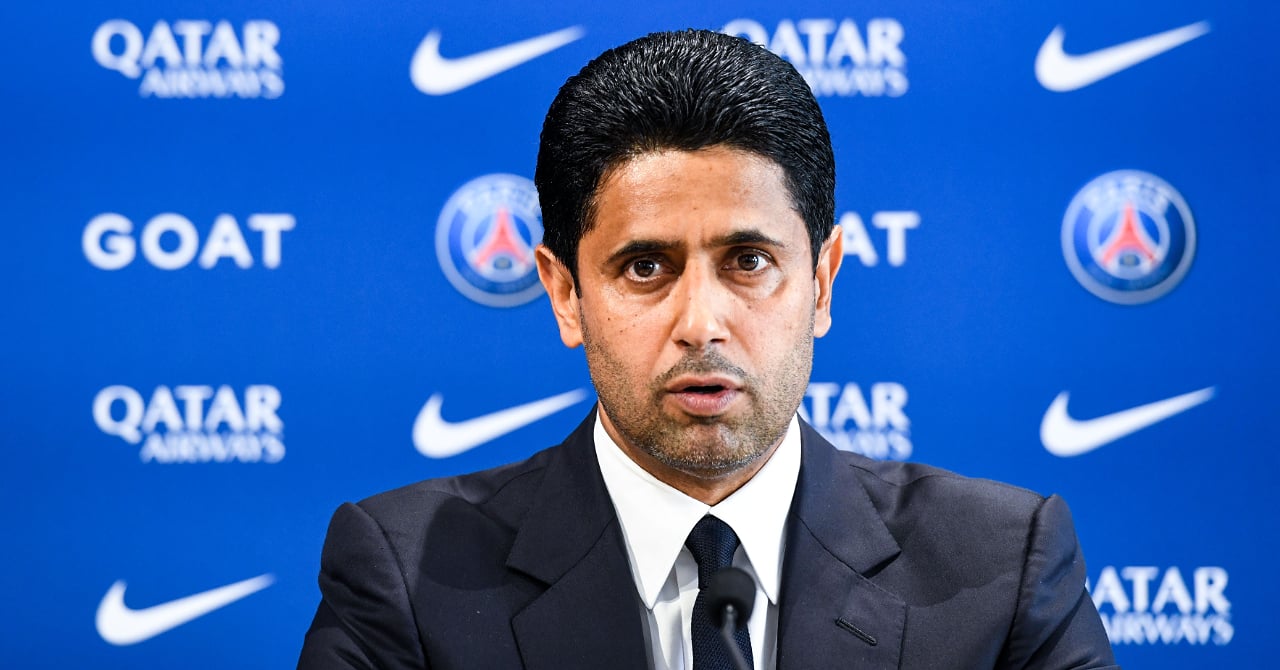ARTICLE AD
To understand that the Premier League currently lives on a different financial planet from its European neighbors, you don’t need to have a doctorate in accounting and management. For the less courageous, just explore the table of the biggest transfers made last summer, where 6 moves to Premier League clubs occupy the TOP 10. Caicedo and Rice for €116 million each, Gvardiol for 90, Havertz for 75, Hojlund for 73… Going back further, we even realize that second-rate clubs today remain much better armed than members of the French, German, or Italian TOP 3. Wolverhampton, accustomed to playing the maintenance in recent seasons in England, had for example offered the Brazilian international Cunha for 50 million euros, when Nottingham Forest, promoted to the Premier League the season before, immediately dropped 150 million euros to reshape the face of its workforce.
It is common knowledge that Premier League clubs today live on three main sources of income: TV rights, estimated at more than 2 billion euros per season, ticketing revenue, and finally the sale of jerseys. , or by extension everything related to the marketing and commercial aspect. Since 1992, the English elite clubs have seen their remuneration increase exponentially, with growth estimated at more than 2,800% according to figures from the BBC. Last season, for example, Manchester City recorded a gain of €830 million over the entire season thanks to these three figures (i.e. 100 million more than in 2022), when Brighton passed the 220 million mark. Dizzying figures, yes, but also misleading in terms of the economic conjecture that these clubs are going through today.
Payroll, a subject that will still annoy
According to figures from the BBC and finance expert Kieran Maguire, the wage bill represents today, by far, the biggest expense for Premier League clubs. Last season, Manchester City’s personnel costs were estimated at 490 million euros. Even Leicester, finally relegated at the end of the season, exceeded the 200 million mark with copious salaries, estimated on average at €100,000 per week. For comparison, a Lille player received on average €95,000 gross… per month last season, according to figures from Sportune. As things currently stand, this does not constitute any obstacle for English clubs for their participation in UEFA competitions, the regulations authorizing clubs to devote 90% of their income to salaries.
But from next season, the situation could change since the European football body had recently recorded the increase of this margin to 80%, then to 70 for the 2025-2026 season. There BBC adds that the Premier League could also scale back and vote for a tightening of its financial rules for the years to come, while salaries and transfer fees would absorb around 90% of the total income of each Premier League club. In recent months, Everton had already been deducted 8 points for having violated the rules of the PSR (Profit and Sustainability Rules, the financial fair play of the Premier League), and Nottingham Forest, 4 points. Also on the pile of files are Leicester, Chelsea and Manchester City, who are still waiting to know what sauce they will be eaten with. In the event that English clubs had to considerably reduce their allocated salaries to hit the ground running, the EFL would fear a drop in the attractiveness of the Championship according to the Daily Mail… Another danger awaiting the Premier League, even if the idea of emulating the NBA model with a luxury tax (a salary cap to which clubs should adhere) had recently been mentioned.
Record losses for English football
This may seem paradoxical, but even though Premier League teams are now spending huge sums on the transfer market, their economic health has never been so worrying. According to BBC, many clubs continue to lose money on a daily basis. Kieran Maguire, financial expert, cites in particular the example of the Russian tycoon and former owner of Chelsea, Roman Abramovich, who had to put in around 1 million euros per week, for 19 years, to cover the losses of the London club. To the extent that the valuation of players follows the law of a volatile, deregulated market, and does not respond to any universal scale, the BBC relied on a table of profits and losses of Premier League clubs, without taking into account operations linked to the purchase or sale of players. Result: we see that Brentford is the only profitable Premier League club (around 5 million euros in 2023).
The overall losses of the 20 Premier League clubs amounted to more than a billion euros last season. Chelsea, for example, recorded a loss of more than 110 million euros, when the 2016 English champion, Leicester, increased the score to 170. When we only take into account expenses linked to transfers, the addition is much saltier for some. Arsenal had a deficit of 260 million euros, while the promoted Nottingham Forest was close to the 200 mark. In total, more than 10 billion euros were spent by Premier League clubs on transfer compensation during of the 2022-2023 financial year, each time with new practices, each more ingenious than the last, like Chelsea and its amortization. Today, the total debt of English clubs amounts to 4.2 billion euros, Tottenham (781 million) and Manchester United (773 million) alone representing a quarter of this bankruptcy… But to comply under the PSR regulations, clubs must present on their annual balance sheet losses of less than 122 million euros over the last three years… Suffice to say that we are very far from it for some.

.jpg) 8 months ago
48
8 months ago
48 

